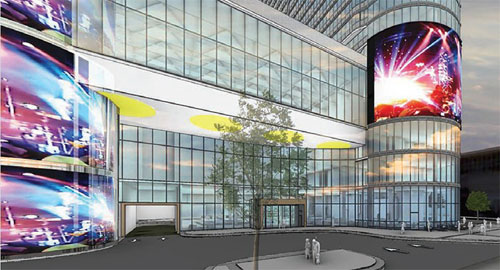By Brice Wallace
While Utah’s travel and tourism industry is in “a rough patch,” some signs indicate a recovery from the COVID-19 pandemic is taking place or on the verge of happening.
During the October Newsmaker Breakfast at the Kem C. Gardner Policy Institute, several industry experts expressed enthusiasm based on recent and underway infrastructure developments, a strong September at Zion National Park, future conventions scheduled for Salt Lake City, and an increase in site visits and page views at Visitutah.com early this fall compared to a year earlier.
For example, the industry stands to benefit from the renovations at the Salt Lake City International Airport, and the construction cranes at the convention center hotel project adjacent to the Salt Palace “are one of the many signs of optimism about Utah’s economy,” said Vicki Varela, managing director of the Utah Office of Tourism.
“We are on a good path for recovery in so many categories,” she said. “It’s because the fundamentals are in place in Utah in terms of thoughtful investments in the right infrastructure at the right time. There’s lots of reasons for us to be optimistic, once everybody puts their masks on and we get through this spike.”
“I think it’s going to rebound and be busy,” said Jeff Bradybaugh, superintendent at Zion National Park, noting that the park had more visitors in September than ever before in that month. “We’re grateful to see that rebound.”
Visit Salt Lake is seeing many conventions planned for 2020 be rescheduled for 2021, according to VSL’s president and CEO, Kaitlin Eskelson.
“One of the conversations I’ve had with Vicki and with some legislators as a whole is to say, ‘Really, what we need is to get through this period of time that is really hard, because the future is really bright,’” Eskelson said. VSL is booking at about 94 percent of its original booking goal for future years, she added.
“So, if we can get through 2020 and 2021, we should be in very, very good shape, long term in terms of vitality. It’s just about pivoting in the moment and making sure that we’re being responsive to the time.”
Early this spring, Utah’s travel and tourism industry was on pace for another record year for visitation, visitor spending, jobs, wages and tax revenue. The pandemic derailed all of that. The number of Utah jobs in leisure and hospitality — accounting for about 65 percent of all travel and tourism jobs — in April contracted to about half of its year-earlier level. In August, it still was down about 17 percent. Visitation to Utah’s national parks began slipping in March and dipped significantly in April. Statewide hotel occupancy rates are just now slowly returning to 2019 levels.
Visit Salt Lake has seen a loss of about $340 million worth of economic impact since COVID hit, including 109 groups canceling meetings in the city, resulting in the loss of about 600,000 room nights at hotels.
“From just an overall perspective, our hotels … it’s been a really rough go for them,” Eskelson said. “They’ve had a number of months that have really been at 20 percent or less occupancy. In some instances, they’ll continue to be there until we can start welcoming people back.”
“This pandemic will leave an indelible signature on Utah for some time to come, and no industry has felt the impact of the pandemic more than our leisure and hospitality sector,” said Natalie Gochnour, director of the Gardner Institute, part of the University of Utah. “Now the work has begun to fortify, rebuild and recover.”
The most important component in facilitating that recovery is for people to wear face coverings, Varela said. “Our recovery depends on our personal responsibility to flatten the curve,” she said. “That’s what our visitors are watching for.”
Utah already “has what people want” regarding its natural attractions, which are “a place where they can get out and breathe and feel whole again,” she said. “Our outdoor recreation is an even more important part of our brand, for Utahns and for out-of-state visitors, than it’s ever been,” she added.
The industry also has benefited from investments from the state, including $12 million from federal CARES Act funds. “We’re not seeing international visitors and we don’t expect to for some time, but the state’s investment has enabled us to stay in the conversation with international visitors,” Varela said.
The number of conversations for future convention bookings in Salt Lake City has been on the rise. The future 700-room Hyatt Regency property is “a game-changer for Salt Lake because we have never had a convention center hotel that we could sell as part of our package,” Eskelson said.
Several of the speakers said the lull caused by the pandemic has provided a chance to pause momentarily and reassess their activities and approaches.
“I think this is has been an opportunity for us to recalibrate and kind of just home in everything we’re doing and what our strategy looks like,” Eskelson said. When the pandemic is over, “it’s going to be a really exciting time. So, it’s just hunkering down and homing back in on who we are and who we want to be.”
“This is a time when Utah’s resilience is going to show,” Varela said. “We’re stepping back and measuring ways that we want to … ‘recover to better,’ and I am highly optimistic. If there’s a place that you could invest your personal capital, I would say invest it in Utah’s tourism economy because the future is really bright.”








